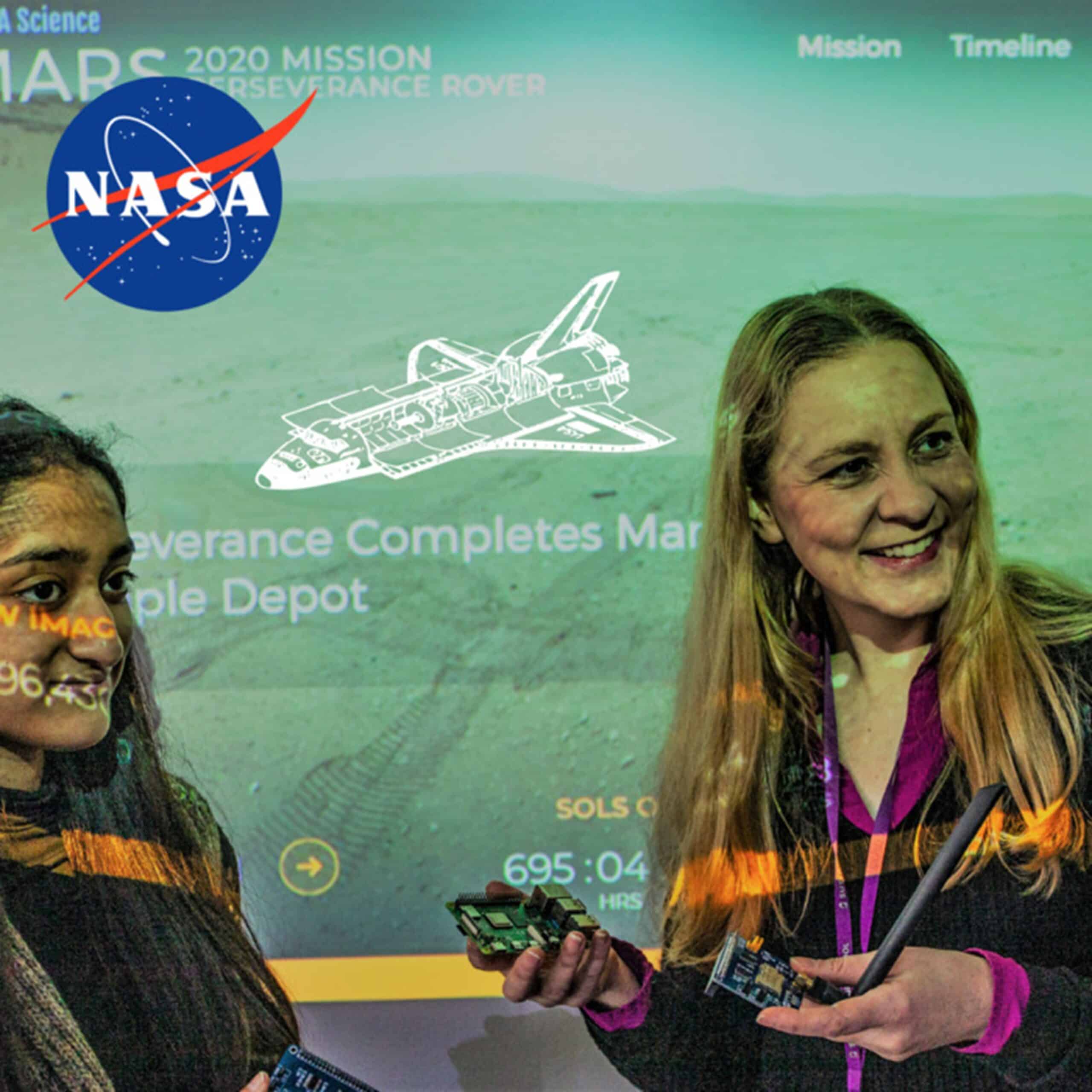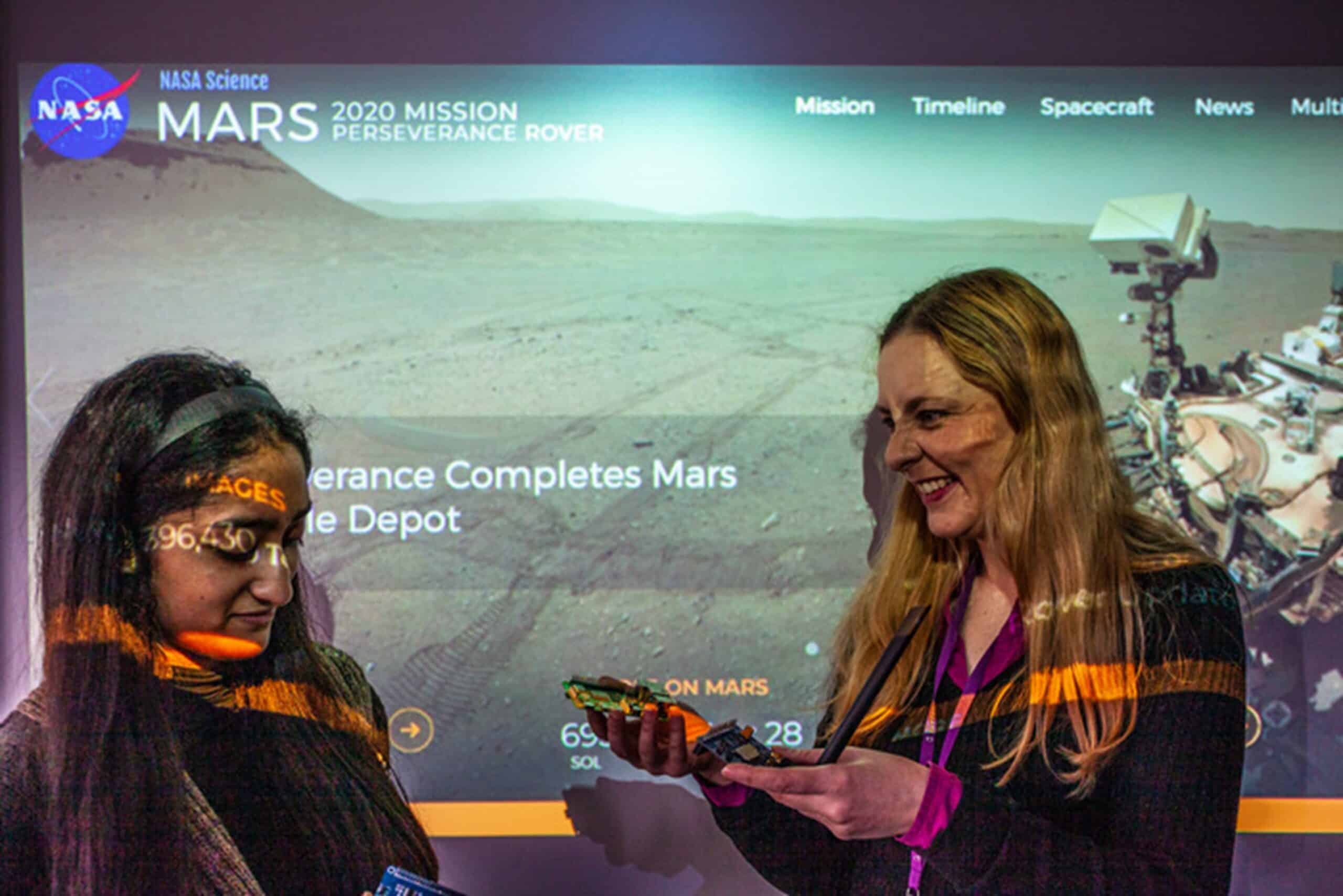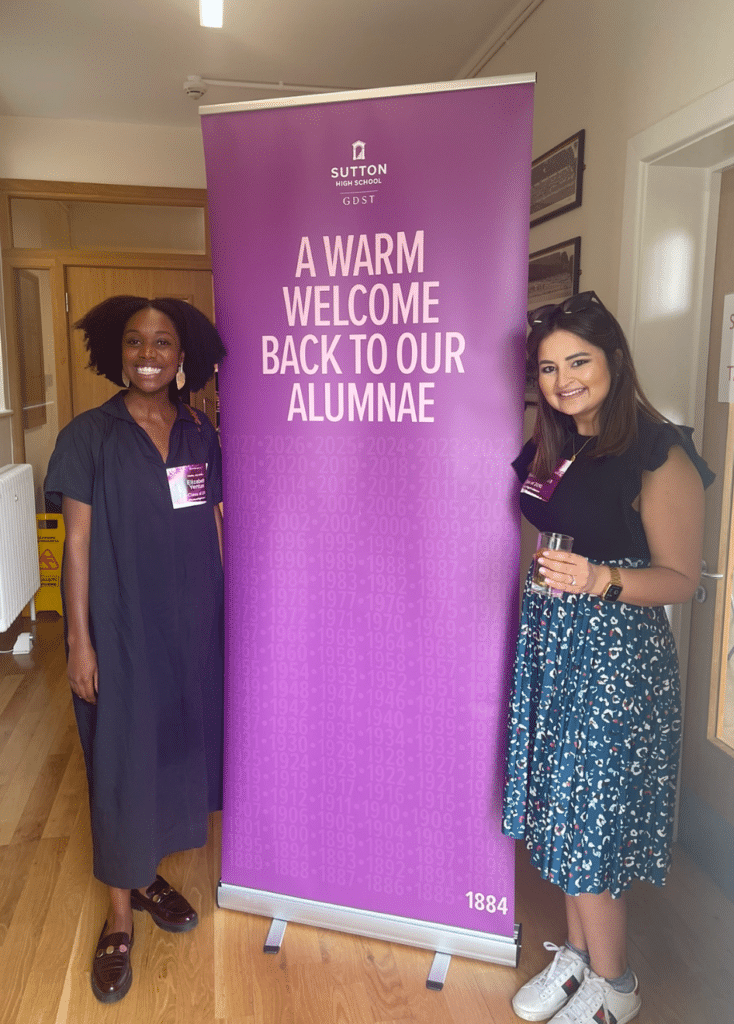14 March 2023
It’s official: The sky is NOT the limit for the girls at Sutton High School and it IS rocket science!
We are delighted to announce that our NASA trained Head of computer science, Ms Nicola Jane Buttigieg, is offering the opportunity to learn ‘rocket science’ as part of some of her computer science classes.
Ms Buttigieg’s mission to teach rocket trajectory simulations, or more specifically, python coding for space technology, started back in lockdown when she began outreach training with the NASA STEM Educator Professional Development Collaborative from home.
Her training and subsequent space technology expertise caught the attention of her employer, Sutton High School, and the Girls Day School Trust (GDST), who have since launched a first-of-its-kind Space Technology Diploma for their teachers.
She says: “Not only is this a fascinating opportunity for our girls, it will also hopefully encourage more girls to follow a career in STEM. The European Space Agency has said it is aiming to employ women in 40%+ of STEM roles by 2025. Our ability to offer the study of space technology is an excellent way of attracting more interest amongst our students to follow a STEM related career”.
Kevin Stannard, GDST Director of Innovation & Learning, comments, “The main aim of the GDST’s Space Technology Diploma has been to develop the skills that will enable students to consider such careers. The diploma aims to address the wastefully small number of young women contemplating STEM careers. Educationally too it is innovative in that it promotes problem-based learning, bringing space technology together with computer programming.”
Sutton High Head, Beth Dawson, adds, “We are so lucky to have Nicola’s expertise in space technology. We are committed to pushing the boundaries of education in all fields and remain true to our GDST motto of ‘where girls learn without limits.’ Testimony to this is Nicola’s expert knowledge and backing from organisations such as Amazon Web Services, NASA IMPACT, Cambridge University Space Flight (CUSF), and the University of Warwick Satellite Programme (WUSAT). This means we are at the vanguard of space technology education in schools.”
While doing her NASA STEM course, Ms Buttigeig became interested in Python use for space and airborne technology, which led her to the Python package GPKit based at MIT (a tool that enables manipulation of models for optimising the design and build of exploratory devices). It functions around the concept of ‘Geometric Programming’ with its ability to automate and execute formulas and calculations in seconds such as to maintain an airborne state. Something that would take a human several days to achieve.
The ‘Geometric Programming’ moment boosted Ms Buttigieg to engage with other related Python programming tasks, such as to gather and analyse Earth observation data enabled by those devices – which attracted interest from NASA DEVELOP who reached out to offer suggested methods for teacher delivery, focusing on practical internship skill reinforcement.
At the same time, Ms Buttigieg began sharing her knowledge with her computer science students at Sutton High School, who took part in the NASA Mission to Mars Student Challenge, in anticipation of the automated landing of the Mars 2020 Perseverance Rover.
She says, “Witnessing Perseverance’s iconic 2021 automated EDL landing in real time online during the pandemic, turned out to be a life changing experience for me and my students!”.
The current AWS Proof of Concept (POC) student facility to be pioneered by Sutton High School is in line with a partnership with Cambridge University Space Flight (CUSF) and UK commercial space tech start-up Launch Access Ltd., for upcoming high-altitude balloon and research rocket launch experiments during this year’s programme.
The experiments are to be based on the collaborative effort to deliver the first computer science-focused adaptation of the tried and tested NASA DEVELOP internship model here in the UK, integrating use of NASA Earth Science Data Systems satellite data leveraging tools. The adaptation effort will aim to build and reinforce practical internship coding skills for data processing, data transmission and sensor robotics at pre-university level, via a series of progressive, scaffolded project tasks.
The GDST Space Technology Diploma
Equivalent to an undergraduate module, the GDST Space Technology Diploma programme has been designed to fill a gap; there is no specific degree that solely focuses on computer science disciplines relevant to Space Science. The areas studied encompass earth observation, stratospheric data analysis, computer vision and airborne, deep space and inter-planetary robotic sensor automation.
GDST Computer Science teachers delivering the programme across the country form part of a core team, who receive CPD training prior to delivery of the programme’s scaffolded project-based curriculum. As computer science is an ever-developing subject, and as graduates in the industry less commonly choose education as a direct career path, trained teachers in the more specific (and quickly expanding) area of programming for space technology are hard to come by.
Further Details
Space agencies worldwide recognise attracting more women is vital, with The European Space Agency aiming to employ women in 40%+ of STEM roles by 2025.
Following discussions with the UK Minister for Science, Research and Innovation, the UK Space Agency Skills Lead, ESERO-UK and ESA Academy, a scaffolded, practical project-based experiment series has resulted in formulating the current diploma curriculum scheme.
NASA Earth Science Data Systems, NASA DEVELOP, Cambridge University Space Flight (CUSF), the University of Warwick Satellite Programme (WUSAT) and Amazon Web Services (AWS) have acted as collaborators on this year’s diploma delivery effort across ten UK GDST schools.
In the lead up to this academic year (2022/23), a Programming Skills for Space Technology Student Survey was held by the GDST during the UKSEDS Student Space Conference at King’s College London, to discover that of the full survey pool, 62% of students reported they did not have the opportunity to learn coding skills during high school secondary education years, the top language of interest for desired student coding ability was Python at 72%, and that 49% of students reported they had no knowledge of external coding skill-building provisions, nor could pursue anything offered due to time clashes and other restrictions, including the factor of expensive costing.
The first pilot of the Space Technology programme ran at Sutton High School in 2021, following training Ms Buttigieg received from the NASA STEM Engagement & Educator Professional Development Collaborative (NASA EPDC) based at Texas State University, toward their educator Digital Badges initiative. Additional collaborators on the pilot were NASA Globe Mission Earth, My NASA Data, and the Astronomy Technology Centre at the Royal Observatory Edinburgh.
The first inter-school pilot (four GDST schools) in 2022 drew the additional collaboration of University of Hertfordshire and the inclusion of a central London joint-schools student conference with guest international panel. The current 2023 multi-school pilot (ten participating GDST schools) anticipates a residential conference and has attracted the additional collaboration of Warwick University Satellite Programme, Cambridge University Space Flight, and Amazon Web Services.



